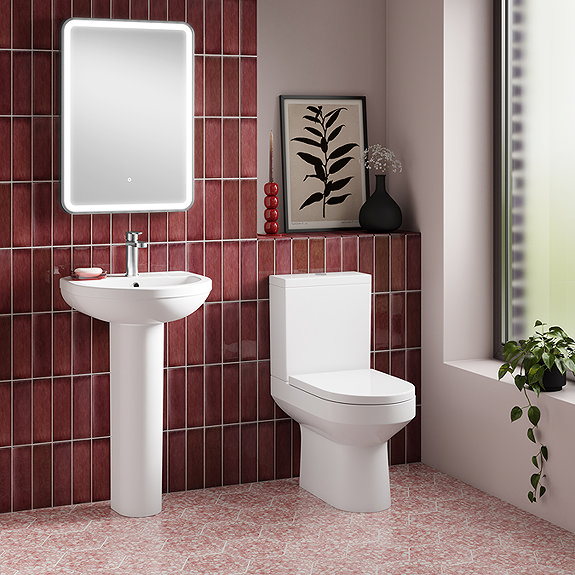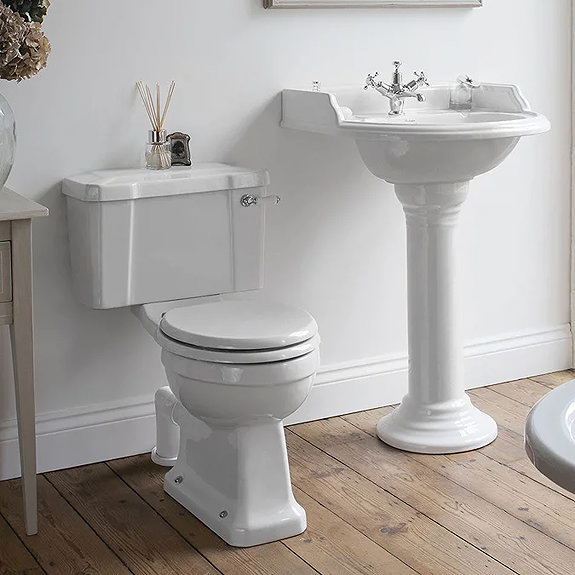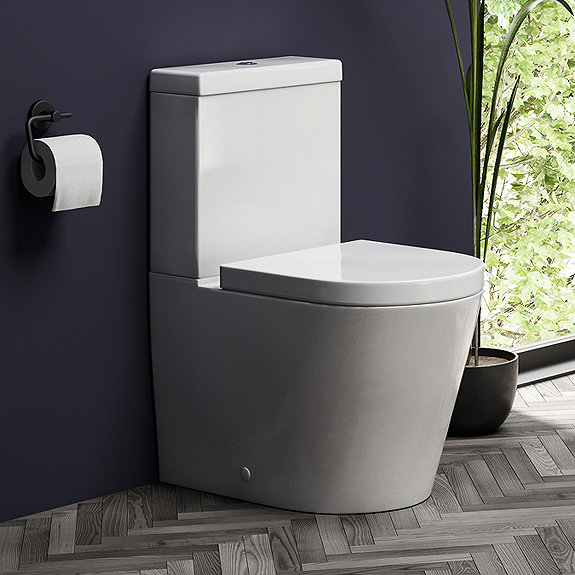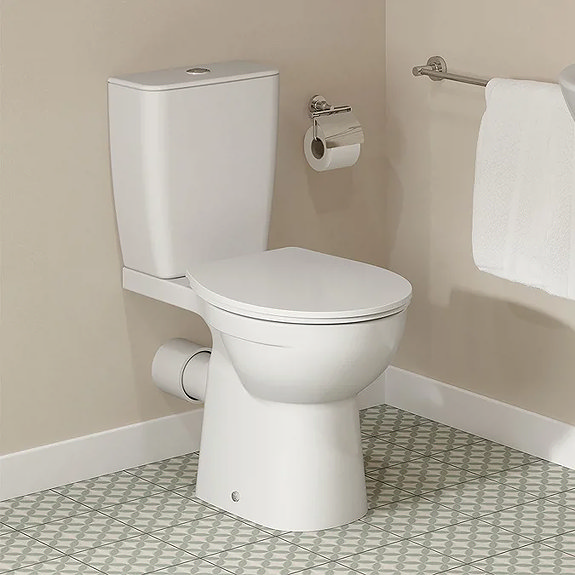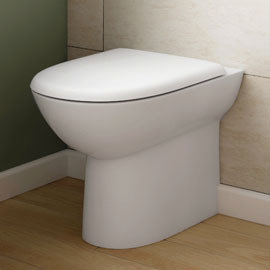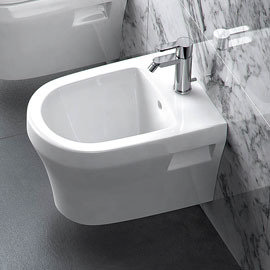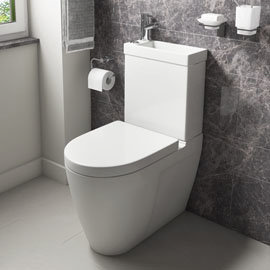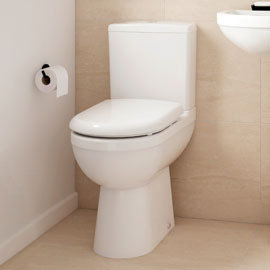UP TO 60% OFF SPRING SALE!
Free Delivery on Orders Over £499**
Close Coupled Toilets Buying Guide
Close Coupled Toilets Buying Guide
Choosing a Close Coupled Toilet for Your Bathroom
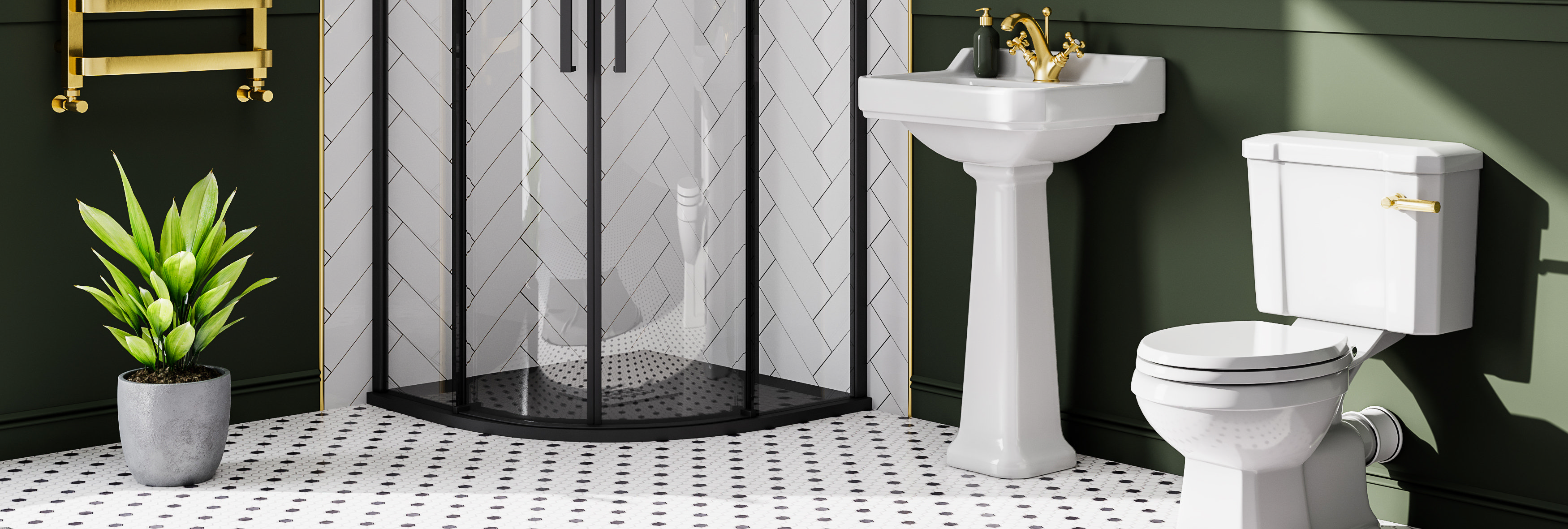
Welcome to the world of close-coupled toilets — the versatile bathroom essential that blends practicality with style. Whether you're upgrading an old model or adding a new fixture to your home, this expert close-coupled toilet buying guide will walk you through everything from types of close-coupled toilets to installation tips, water-saving features, and what to look for in your perfect throne.
Ready to make an informed choice? Let’s get started!
Click on the links below to jump to a section:
The Basics: Everything First-Time Buyers Need
For the Savvy Shopper: Advanced Insights
- Hygiene and Maintenance
- Water Efficiency
- Installation Tips
- Popular Brands and Styles
- FAQs & The Last Word on Finding Your Perfect Throne
The Basics for First-Time Buyers
What Exactly is a Close-Coupled Toilet?
A close-coupled toilet is a toilet where the cistern is mounted directly on the toilet bowl, creating a compact, space-saving unit. Unlike traditional toilets that have a visible flush pipe between the bowl and the cistern, close-coupled toilets have a unified design, making them a popular choice in modern bathrooms. They are known for their ease of installation, efficient use of space, and wide range of styles, which makes them suitable for both contemporary and traditional bathrooms.
Types of Close-Coupled Toilets
Space-Saving Designs
Close-coupled toilets also come in compact or short-projection models, ideal for smaller bathrooms or en-suites. These toilets minimise their depth, reducing how far they extend into the room, making the most of limited space. Corner close-coupled toilets, which feature triangular cisterns, are another great option for bathrooms with awkward layouts.
Advantages of Close Coupled Toilets
Flush Mechanism: Dual vs. Single
- Dual-Flush: Most modern close-coupled toilets feature a dual-flush system, which offers two flush options — a smaller flush (about 3-4 litres) for liquid waste and a larger flush (5-6 litres) for solid waste. This allows you to save water and reduce your household’s overall water consumption.
- Single-Flush: Some older models may still have a single-flush mechanism, which uses the same amount of water for both liquid and solid waste. While effective, single-flush systems are less water-efficient than dual-flush options.
- Customisation: Depending on your bathroom’s style, you can choose between a variety of flush button styles or handles, allowing you to customise the overall look and functionality of your toilet.
Rimmed vs. Rimless Design
- Rimmed Toilets: Traditional rimmed designs include a ledge inside the bowl, where water flows around to flush waste. While effective, the rim can trap dirt and bacteria, making cleaning more difficult.
- Rimless Toilets: Rimless toilets eliminate this ledge, allowing water to flow directly into the bowl. They are easier to clean, more hygienic, and increasingly popular in modern bathrooms.
Toilet Seat Features
- Soft-Close Seats: Soft-close seats prevent slamming by slowly lowering the seat and lid. This feature not only reduces noise but also minimises wear and tear on the seat.
- Seat Materials: Close-coupled toilet seats are available in a range of materials, including thermoplastic, thermoset, and wood. Thermoplastic and thermoset seats are durable and easy to clean, while wooden seats add warmth and a traditional feel to the bathroom.
- Special Features: Some toilet seats come with additional features, such as quick-release mechanisms for easy cleaning or antibacterial coatings for improved hygiene.
For Savvy Shoppers
Already familiar with the basics and looking to dive into the technical details? This section is for you. We’ll cover everything from water-saving flush mechanisms to installation tips, soil pipe considerations, and the latest hygiene features. Whether you’re after maximum efficiency, long-term durability, or a design that perfectly complements your bathroom, we’ll give you all the insights you need to make an informed decision and get the best value for your money.
Close-Coupled Toilet Cost Range
Close-coupled toilets offer a wide range of pricing options depending on the design, materials, and additional features. Here’s an overview based on popular models:
- Basic Models: Prices for entry-level close-coupled toilets typically range from £90 to £160, offering functional designs with standard features like soft-close seats.
- Mid-Range Models: More advanced toilets with features such as rimless design, water-saving mechanisms, and short-projection space-saving models generally range from £160 to £300.
- High-End Models: Luxury or designer models, including those with smart features like bidet wash functions, heated seats, or custom finishes, can go upwards from £300 to £600, and in some cases, reach over £1,000 for premium brands and smart toilets.
Disclaimer: These prices are estimates and may fluctuate based on brand, location, and market conditions. Be sure to check current pricing before making a final purchase decision.
Keep It Clean: Hygiene and Easy Maintenance
Rimless toilets are a game-changer when it comes to hygiene. Without the traditional rim that can trap dirt and bacteria, cleaning becomes much easier. Many close-coupled toilets now feature anti-bacterial coatings or special glazes that reduce limescale build-up, further simplifying maintenance.
Regular cleaning with a toilet brush and mild cleaners will help keep your toilet in pristine condition. For rimless models, ensure you flush the bowl thoroughly to prevent any debris from accumulating.
Saving Water, Saving Money: Efficiency Matters
Dual-Flush Magic
Close-coupled toilets with dual-flush mechanisms are highly efficient when it comes to water conservation. By offering a choice between a smaller and larger flush, you can significantly reduce water usage. This is particularl
Water-Saving Innovations
Some models also allow you to connect the wastewater from your washbasin to the toilet’s cistern, reusing this water for flushing. These systems are an excellent choice for eco-conscious households looking to minimise water consumption even further.
WRAS Approval
It’s important to ensure that your toilet complies with WRAS (Water Regulations Advisory Scheme) approval for UK homes. WRAS-approved toilets help conserve water and meet necessary water efficiency standards, so check for this certification when selecting your model.
Close-Coupled Toilet Installation Tips
Close-coupled toilets are generally straightforward to install, making them a great option for DIY enthusiasts. However, there are a few things to keep in mind:
- Soil Pipe Connection: The type of soil pipe connection (horizontal or vertical) will determine how your toilet connects to the plumbing. Horizontal connections are more common in modern homes, while older homes may have vertical soil pipes.
- Fixing Kits: Most close-coupled toilets come with a fixing kit that includes everything you need for installation. If not, these kits are easy to find and affordable.
- Professional Installation: While many people can install a close-coupled toilet themselves, it's always a good idea to consult with a professional plumber if you're unsure about any aspect of the installation.
Popular Close-Coupled Toilet Brands
Toilets come in all shapes, sizes, and budgets. Choosing a reliable brand can make a big difference in terms of quality, durability, and peace of mind. Many top brands offer guarantees and extended warranties, ensuring your toilet will stand the test of time. Here are some of the top brands we stock:
- Arezzo: Sleek, minimalist designs that combine function and form.
- Burlington Bathrooms: Perfect for traditional bathrooms, with high-quality, Victorian-inspired designs.
- Duravit: Luxury toilets with a focus on modern elegance and innovation.
- Ideal Standard: Renowned for reliable, stylish, and durable toilets that offer great value for money.
- Victorian Plumbing: Offers a wide range of styles, from practical to high-end designer options.
Brands Disclaimer: Please note that the availability of products from these brands can vary depending on stock levels and supplier inventory. We recommend checking the product pages on our site to confirm availability before making any final decisions.
Frequently Asked Questions
What’s the best type of close-coupled toilet for a small bathroom?
For small spaces, opt for a compact or short-projection toilet. These models are designed to save floor space while still offering full functionality.
Is a rimless toilet better than a rimmed one?
Yes, rimless toilets are easier to clean and more hygienic. Without the rim to trap bacteria and dirt, they offer a superior flushing experience and require less frequent deep cleaning.
Can I install a close-coupled toilet myself?
Yes, many close-coupled toilets are designed for easy DIY installation. However, if you're moving the toilet's location or unsure about plumbing connections, it's best to consult a professional.
The Last Word on Finding Your Perfect Close-Coupled Toilet
Choosing the right toilet isn’t just about functionality, it can truly elevate the look and feel of your bathroom. Ready to give your bathroom the upgrade it deserves? Explore our full range of toilets, bidets, urinals, and accessories today and turn your space from ordinary to extraordinary.
For more tips and inspiration, check out our blog posts on bathroom design, toilet maintenance, and other expert buying guides. And hey — don’t keep all this valuable info to yourself! Share this guide with friends or family on social media so they can boss their bathroom revamp too. Together, we can transform those bathroom dreams into reality!
